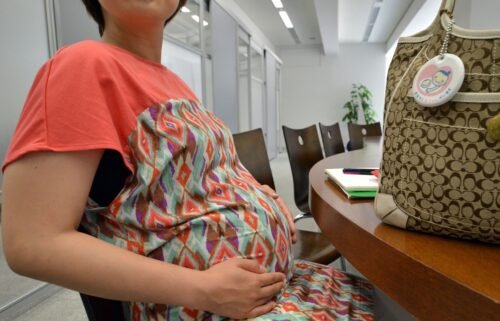Hygiene theater, mask theater, climate theater
Americans have spent more than a year without live access to the performing arts, so maybe we can all be forgiven for engaging in a bit of theater.
It’s everywhere.
Too much hygiene. First, let’s consider that some theater can be harmful, which is why the Centers for Disease Control and Prevention, more than a year into the pandemic, is now warning against obsessive disinfecting as an unnecessary and potentially dangerous “hygiene theater.”
That’s the phrase used by Vincent Hill, chief of the Waterborne Disease Prevention Branch, on a CDC-sponsored telephone briefing. The problem is twofold: One, over-sanitizing might give people a false sense of security that leads them to be too relaxed when it comes to distancing or mask use, which really does matter. Two, sanitizers and disinfectants can be hazardous in excess or in combination. (Reminder: Never mix bleach and ammonia.)
Our understanding has changed. The caution to Americans that they’ve been over-disinfecting community spaces might seem like whiplash to Americans who have been doing their part to keep things clean and stop the spread of Covid.
The CDC has updated its guidance for cleaning and disinfecting surfaces in community settings.
It takes a frustratingly long time for CDC to update its guidelines, and they’re often not level about what’s behind the government’s thinking, argues Kent Sepkowitz, a CNN medical analyst and a physician and infection control expert at Memorial Sloan Kettering Cancer Center in New York. He writes:
The CDC, of course, is in the very unenviable position of needing to scare people into action when a threat appears but then turning around the very next week or month or year to now assure the exact same people that there is nothing to be afraid, that it is safe to go back into the water.
An impossible task. Better, though, to admit that consensus has changed; that new evidence is available, and we changed our minds after reviewing the data. Instead, we get the usual robotic tone that ignores past missteps and, if anything, points to overly energetic cleaning as ill-advised, perhaps whacky and in no way a normalish response to the terrifying early days of the pandemic when cleanliness was next to godliness and the more the better.
Mask theater
One of the more aggravating and odd current inanities of Covid-19 life is to see people in masks walking outside on the sidewalk past restaurants, where people can take their masks off indoors to eat a long meal while talking to people across the table.
Masking outside on the sidewalk, as Slate argues here, is helpful to make other people comfortable, but not doing much to directly stop the spread of Covid.
Eating indoors, on the other hand, has been shown to be a spreader. And yet people outdoors continue to wear masks and people indoors continue to pull them down to eat. That’s because state and local mask ordinances often require masking, even outdoors, but not for eating. (How could you eat with a mask on?)
It’s not making things any easier that the political rift allows for little in the way of middle ground. You’re either a science-pushing masker or a freedom-pushing anti-masker and never the twain shall meet, even though there is a growing body of evidence that masking indoors should remain and masking outdoors, when you’re not in a large close-in group, should be reconsidered.
This is an interesting trend to follow. I was riveted by an NPR interview yesterday with frequent CNN guest Dr. Ashish Jha about whether masks outdoors are worth it.
Here’s the key exchange between Jha and the interviewer, Mary Louise Kelly:
Kelly: There will be people listening to us who are screaming at their radios right now saying it’s still spreading and the variants are out there and so far, most people aren’t fully vaccinated. You shouldn’t be having this conversation yet. What do you say to them?
Jha: I understand that, first of all. But it’s really important to be able to have a nuanced discussion of what is safe and what is not. Because one of the problems is if we can’t have that discussion, then some people will adhere to all the rules, even ones that are not necessarily very useful, and other people will just ignore all of them.
And right now, while cases are spreading, while the variants are out there and very contagious ones like B.1.1.7 [are] really dominant, I do want people to do things that are safe. And part of that is telling people, you know, what restrictions they can let go of. And so I think it’s critically important that we keep indoor mask mandates in for a while. We can’t give up on those, not while infection numbers are high. But it also means telling people what they can relax on. And wearing masks outside, again, unless you’re in a very, very crowded space for extended periods of time, probably doesn’t do much to protect you or protect others.
Keeping everyone on the same page. As our understanding of the virus has changed, the CDC has had to update much of its guidance, forcing states, cities, school districts and businesses to keep pace on quarantines and travel rules, or on disinfecting, distance and mask usage. In many cases, they can’t, leaving a patchwork of rules — or leaving people to figure it out for themselves, even now. Perhaps it’s time for an across-the-board reset.
Climate theater
A lot of people will see some theater in the Earth Day climate summit hosted by the White House on Thursday.
Live-streamed world leaders placed in Zoom-like box talking, with straight faces despite their often carbon-emitting actions, could easily be ignored as Brady Bunch meets an international meeting of SPECTRE, even though it marked a dramatic turnaround in US policy from former President Donald Trump’s rejection of climate science. Read about it here.
The meeting was no joke. World leaders agreed on the need to the need to cut carbon but also made it pretty clear they were not interested in paying much of a price.
The UK’s Boris Johnson, said it can’t be “some expensive politically correct green act of ‘bunny hugging'” and must be about “growth and jobs.”
He demanded commitments from other countries in line with Britain’s.
With Russia, China and Brazil all streaming in for the conference, which continues Friday, the next step will be matching actions to words in the years to come.
Cutting US emissions by 50%. President Joe Biden, for his part, pledged to reduce US emissions by 52% below 2005 levels, part of the Paris agreement he rejoined. But as CNN’s Kate Sullivan and Kevin Liptak note, “While the goals are a part of the Paris climate agreement that Biden rejoined upon taking office, they are non-binding and the administration has not rolled out a plan on how the US will meet them. Officials said Biden and his team arrived at the final number in a meeting at the White House on Wednesday morning.”
Easier said than done. He’ll need 10 Republicans in the Senate to make anything binding. He doesn’t currently have them.
Sometimes the show IS the thing. But this summit was not about finding GOP votes for an infrastructure/climate change plan. It was about putting on a show to convince the world that the US has re-engaged on climate now that Trump is gone and Biden is in office.
“We had to restore America’s credibility, we had to prove we were serious, and I think that today does that in many ways, and not in a chauvinistic — in a way that is sort of inappropriate to our relationship with other countries, but in a way that reinforces the fact that … we need to bring all the countries in the world to the table, we all need to raise ambition,” US Climate Envoy John Kerry told reporters.



